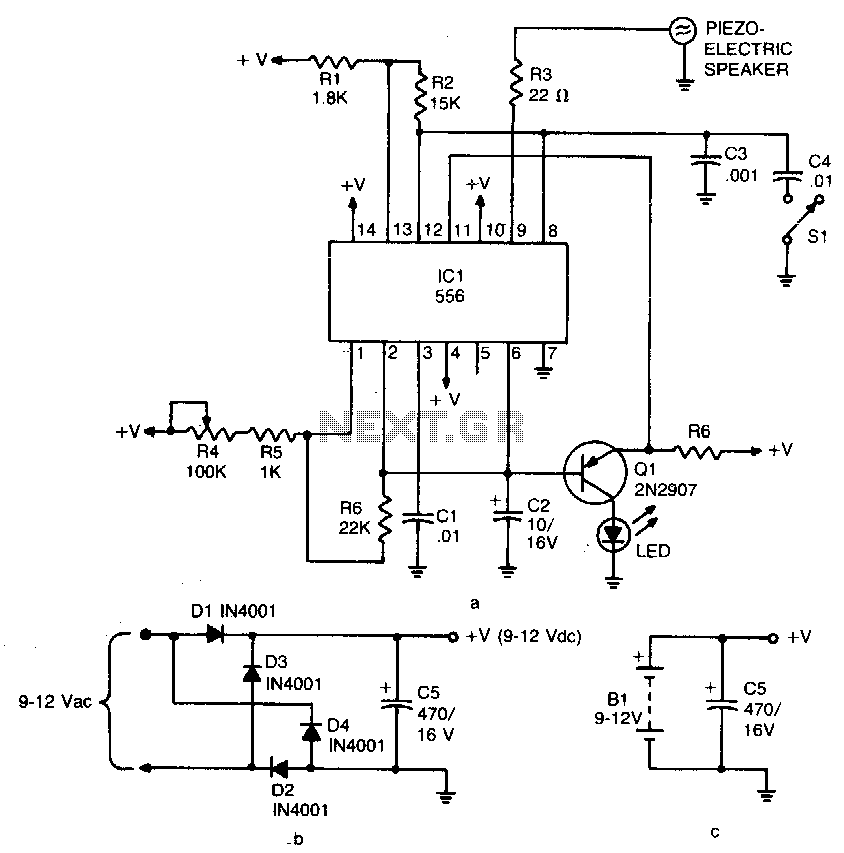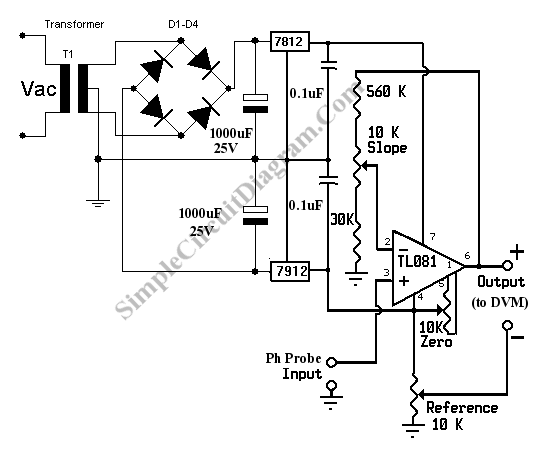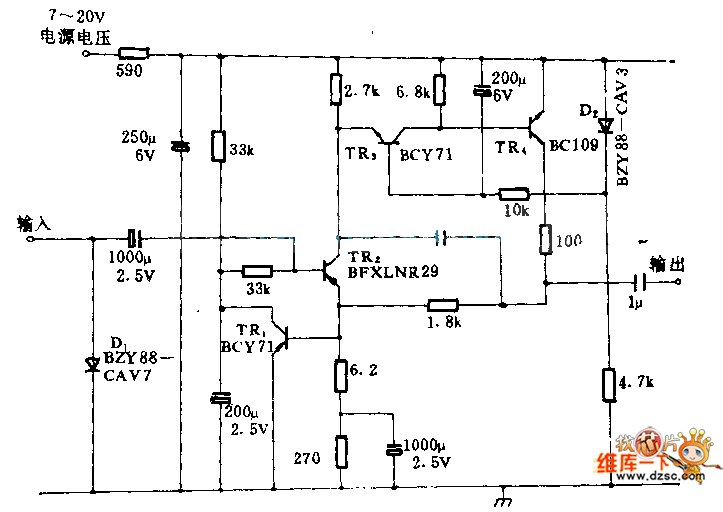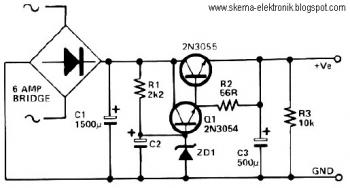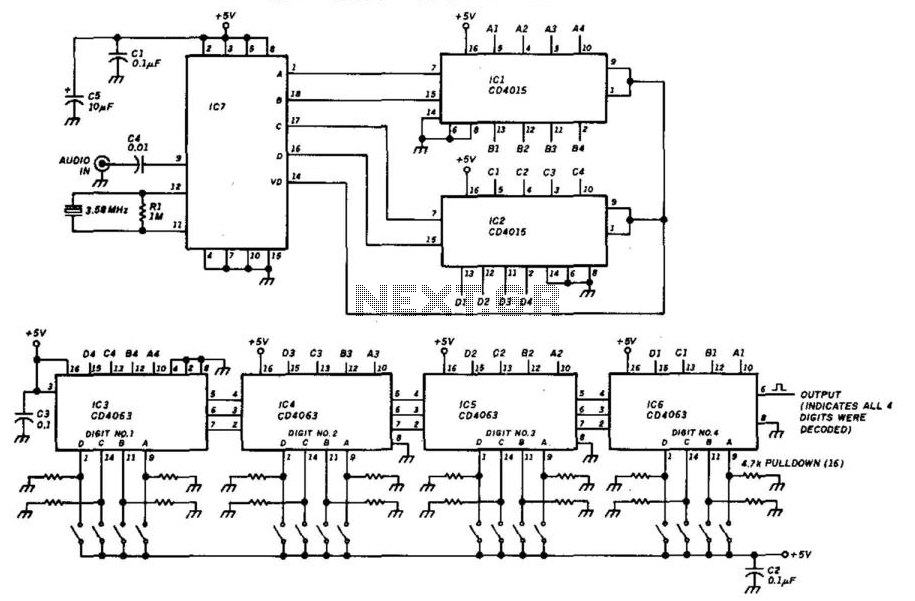
Ultra low noise wideband preamplifier
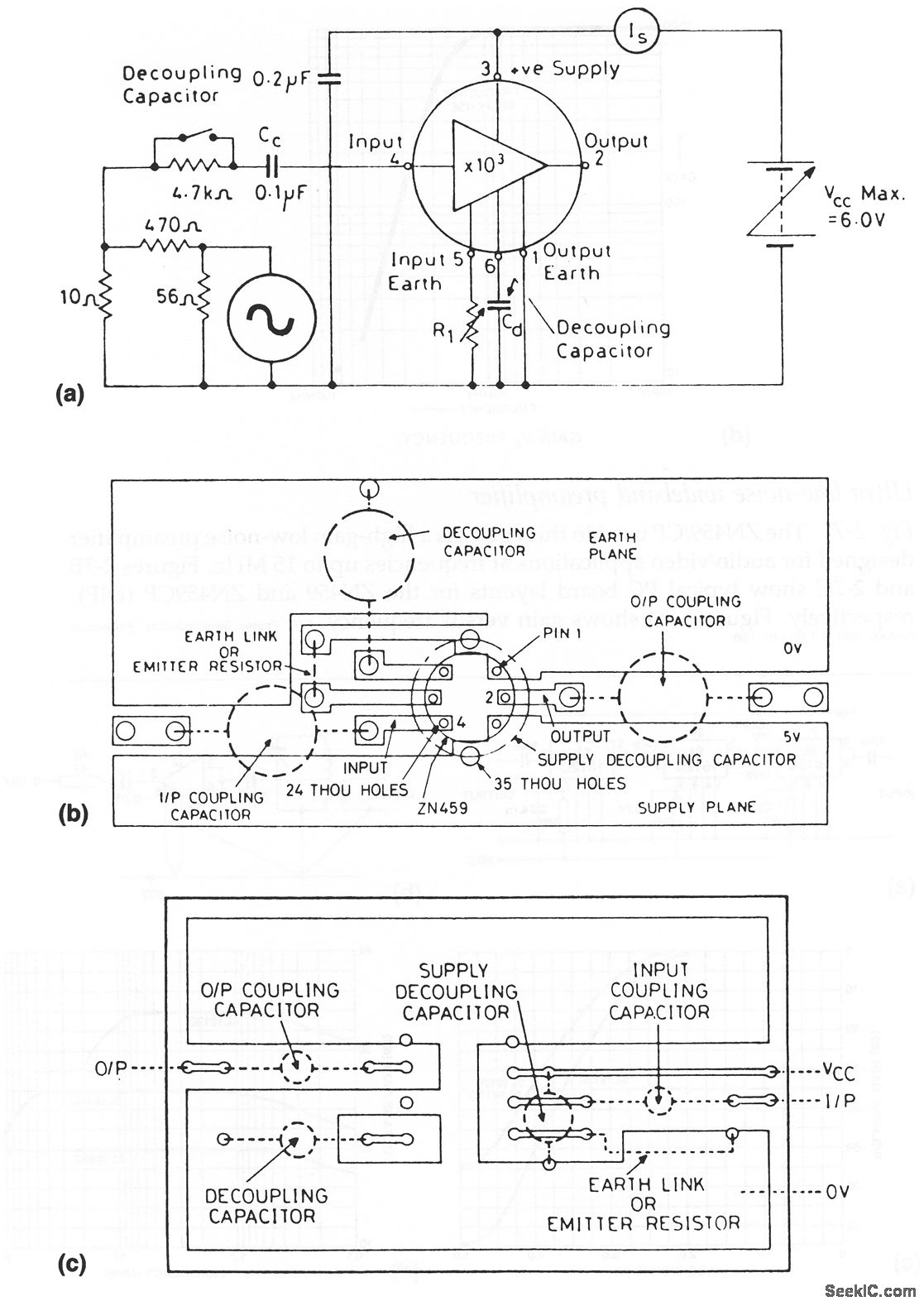
The ZN459/CP utilized in this circuit is a high-gain, low-noise preamplifier intended for audio and video applications at frequencies reaching up to 15 MHz. Figures 2-7B and 2-7C illustrate typical printed circuit board layouts for the ZN459 and ZN459CP (DIP), respectively. Figure 2-7D depicts the relationship between gain and frequency.
The ZN459/CP is specifically engineered to enhance weak audio and video signals while minimizing noise, making it ideal for high-fidelity applications. The device operates effectively within a frequency range of 15 MHz, which is suitable for various audio and video processing tasks.
In terms of design, the preamplifier can be configured on a printed circuit board (PCB) following the layouts shown in Figures 2-7B and 2-7C. These figures provide a visual representation of component placement and routing strategies that optimize performance characteristics such as signal integrity and electromagnetic interference (EMI) reduction.
The gain versus frequency curve presented in Figure 2-7D illustrates how the ZN459/CP maintains a consistent gain across its operational bandwidth, which is crucial for applications that require stable amplification without distortion. This characteristic is particularly important in audio applications where clarity and fidelity are paramount.
When integrating the ZN459/CP into a circuit, it is essential to consider power supply decoupling, input/output impedance matching, and thermal management to ensure optimal performance. Proper layout techniques, such as minimizing trace lengths and using ground planes, can further enhance the performance of the preamplifier. Overall, the ZN459/CP serves as a robust solution for high-gain, low-noise amplification in audio and video systems.The ZN459/CP used in this circuit is a high-gain low-noise preamplifier designed for audio/video applications at frequencies up to 15MHz. Figures 2-7B and 2-7C show typical PC board layouts for the ZN459 and ZN459CP (DIP), respectively. Figure 2-7D shows gain versus frequcncy. 🔗 External reference
The ZN459/CP is specifically engineered to enhance weak audio and video signals while minimizing noise, making it ideal for high-fidelity applications. The device operates effectively within a frequency range of 15 MHz, which is suitable for various audio and video processing tasks.
In terms of design, the preamplifier can be configured on a printed circuit board (PCB) following the layouts shown in Figures 2-7B and 2-7C. These figures provide a visual representation of component placement and routing strategies that optimize performance characteristics such as signal integrity and electromagnetic interference (EMI) reduction.
The gain versus frequency curve presented in Figure 2-7D illustrates how the ZN459/CP maintains a consistent gain across its operational bandwidth, which is crucial for applications that require stable amplification without distortion. This characteristic is particularly important in audio applications where clarity and fidelity are paramount.
When integrating the ZN459/CP into a circuit, it is essential to consider power supply decoupling, input/output impedance matching, and thermal management to ensure optimal performance. Proper layout techniques, such as minimizing trace lengths and using ground planes, can further enhance the performance of the preamplifier. Overall, the ZN459/CP serves as a robust solution for high-gain, low-noise amplification in audio and video systems.The ZN459/CP used in this circuit is a high-gain low-noise preamplifier designed for audio/video applications at frequencies up to 15MHz. Figures 2-7B and 2-7C show typical PC board layouts for the ZN459 and ZN459CP (DIP), respectively. Figure 2-7D shows gain versus frequcncy. 🔗 External reference
